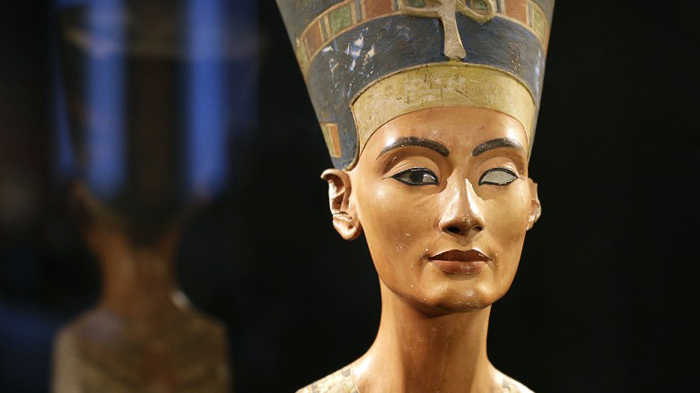The heat is relentless: the sun god, Aten, punishes those who dare to enter, with temperatures exceeding 100 degrees Fahrenheit (38 degrees Celsius).
But what lies beneath these white limestone cliffs could eclipse Howard Carter`s discovery of Tutankhamun, Egypt`s most famous pharaoh.
Another British archaeologist, Nicolas Reeves, believes that Queen Nefertiti`s final resting place is tucked away in a hidden chamber inside King Tut`s tomb.
Reeves` theory, published in a report last August, rocked Egyptologists around the world. But the mystery surrounding the queen begins more than three millennia ago.
Nefertiti ruled Egypt alongside her husband Amenhotep IV. Her not-so-modest name means "a beautiful woman has come." But after reigning for 12 years she vanished. Some Egyptologists believe she became co-regent under a new name, while others believe she may have died.
Reeves and a group of experts entered Tutankhamun`s burial chamber this week. On the Pharonic timeline, Tut is considered a minor king. He died at 17, but his fame is derived from the fact his resting place was found largely intact.
Descending into the bowels of his tomb, one instantly notices it is rather small and unimpressive compared to the grandiose tombs of his neighbors in the Valley of the Kings.
"I had no preconceived notion that Nefertiti was buried here. To be honest, for some time, I fought the conclusion because it seemed so extraordinary," says Reeves. "But that is where the evidence seems to be pointing."
It is the far wall of the chamber that has drawn Reeves` attention.
The first clues are the simple but vivid hieroglyphics adorning the yellow walls. One section depicts what appear to be a mummy and a pharaoh.
Reeves explains that the subtle details in the artwork are similar to the depictions of Tut and Nefertiti in other works.
More about:
















































